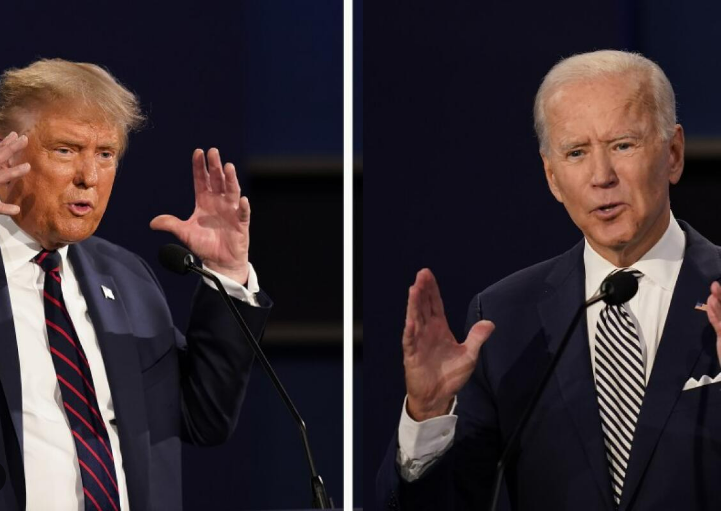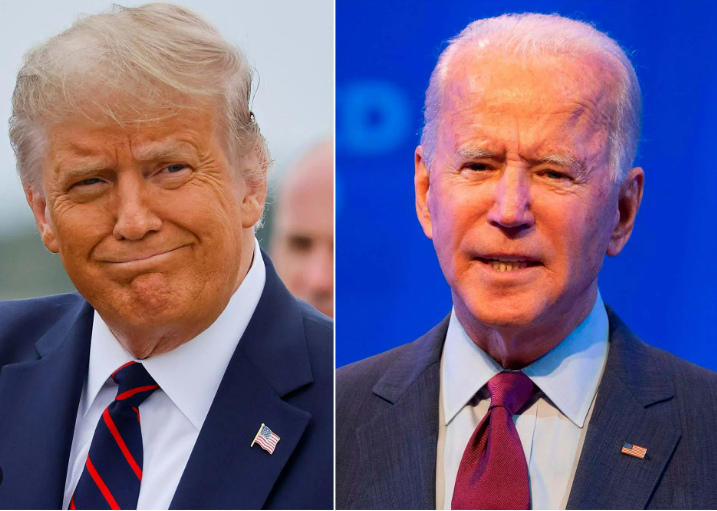Where Trump and Biden Stand on Social Security

As Americans prepare to watch the presidential debate on Thursday, key topics such as Social Security and Medicare are expected to take center stage. These programs are crucial lifelines for millions of Americans, particularly seniors who have historically wielded significant voting influence.
It’s crucial for voters to grasp the positions of each candidate on these issues. This article delves into the stances of Joe Biden and Donald Trump concerning Social Security and Medicare, analyzing their proposals and actions throughout their terms in office.
Social Security
Social Security, established in 1935, stands as a cornerstone of the American social safety net, providing financial support to retirees, disabled individuals, and survivors of deceased workers.
However, the program faces significant challenges. The Social Security Trust Fund is projected to be depleted by 2035, potentially leading to reduced benefits if corrective measures are not implemented.
These financial strains are largely driven by demographic shifts, including an aging population and declining birth rates, resulting in fewer workers supporting a growing number of retirees.
According to Christian Weller, a senior economist and professor of public policy at the University of Massachusetts, Boston, addressing these challenges will necessitate bipartisan political will to increase revenues for Social Security.
He emphasizes the importance of prioritizing revenue enhancement, noting that current benefits are already modest, leaving little room for further reductions.
Where Biden stands on Social Security
Throughout his presidential campaign and tenure in office, Biden has maintained a steadfast pledge not to cut Social Security benefits. He has emphasized his commitment to safeguarding and enhancing the program.
One of Biden’s proposed solutions to ensure the program’s financial stability involves raising taxes on wealthy Americans. Specifically, he has suggested imposing Social Security payroll taxes on earnings above $400,000, which are currently capped at $168,600 as of 2024. However, this particular tax increase promised during Biden’s 2020 campaign has yet to be implemented.
Additionally, Biden supports the idea of increasing benefits for low-income recipients and adjusting the cost-of-living adjustment (COLA) formula to better reflect the real expenses faced by seniors.
Despite these proposals, significant changes to Social Security under Biden’s presidency have not materialized. The complexities of navigating political and economic challenges have posed obstacles to enacting such reforms.
Where Trump stands on Social Security
During his presidency and recent campaign, Trump has maintained a somewhat ambiguous stance on Social Security. While he has pledged to protect Social Security benefits, he has not outlined detailed plans for ensuring the program’s long-term solvency without resorting to benefit cuts or tax increases.
Trump’s strategy often revolves around the belief that a robust economy would naturally bolster Social Security. He argues that economic growth and increased job opportunities would generate higher payroll tax revenues, thereby supporting the program.
However, experts caution that economic growth alone is unlikely to fully resolve the significant funding challenges facing Social Security.
“Faster economic growth can certainly aid Social Security’s finances,” explains Weller. “But it can only contribute to improved Social Security finances if accompanied by robust wage growth.”
At times, Trump has hinted at potential benefit cuts for Social Security, although he has later clarified his commitment to protecting benefits. He has also proposed addressing inefficiencies and fraud within Social Security and Medicare as a means to save costs without reducing benefits.
In earlier years, Trump expressed views on Social Security as a “Ponzi scheme” and advocated for privatization. However, he shifted away from these positions during his first presidential campaign, abandoning previous support for raising the retirement age to 70. Currently, the retirement age stands at 67 for individuals born in 1960 or later.
“I can’t think of any benefit cut less popular than an increase in the retirement age,” notes Weller.
Medicare
Medicare, the federal health insurance program primarily for individuals aged 65 and older, is confronting significant challenges of its own.
The program’s Hospital Insurance Trust Fund is projected to exhaust its reserves by 2036 unless measures are implemented to ensure its solvency. Factors such as escalating healthcare expenses, an aging population, and increased enrollment are key contributors to Medicare’s financial pressures.
“Historically, medical inflation has outpaced general inflation, driving up program costs,” explains Weller. “However, over the last decade, medical inflation has been lower than anticipated, which has somewhat eased the strain on the program’s finances.”
Weller notes a concern that a resurgence in medical inflation could jeopardize Medicare’s financial stability once again.
Where Biden stands on Medicare
Biden has taken proactive steps to address Medicare’s financial challenges. One of his significant legislative achievements, the Inflation Reduction Act, included provisions aimed at reducing prescription drug costs for Medicare beneficiaries. This legislation allows Medicare to negotiate directly with pharmaceutical companies for drug prices, a move expected to generate substantial savings for both the federal government and Medicare recipients.
Under the Inflation Reduction Act, drug companies are required to pay rebates to Medicare if they increase drug prices faster than inflation. Additionally, the act caps out-of-pocket expenses for beneficiaries, offering financial relief to those facing high medication costs. Biden has proposed allocating the savings from these measures into Medicare’s Hospital Insurance Trust Fund to bolster its financial stability.
Furthermore, Biden has suggested increasing the Medicare payroll tax for individuals earning over $400,000 from 0.9 percent to 2.1 percent, aiming to further support the program financially.
During his 2020 campaign, Biden also floated the idea of lowering the Medicare eligibility age from 65 to 60 to broaden healthcare coverage. However, this proposal has not been a focal point during his presidency thus far.
Where Trump stands on Medicare
Trump’s approach to Medicare mirrors his stance on Social Security: he pledges to protect benefits without offering detailed plans on how to achieve this.
Throughout his presidency, Trump did not enact substantial reforms to tackle Medicare’s financial challenges. His administration proposed several initiatives aimed at reducing healthcare costs for Medicare beneficiaries, including efforts to enhance price transparency, lower prescription drug prices, and reduce insulin costs. However, these measures had limited impact on Medicare’s long-term financial stability.
Trump has consistently opposed cuts to Medicare benefits, positioning himself as a staunch defender of the program. He also advocated addressing waste, fraud, and abuse within Medicare as a means to save money.
Under Trump’s administration, there was a modest decline in improper payment rates in Medicare Fee-For-Service, attributed to efforts by the Centers for Medicare & Medicaid Services (CMS) to identify causes of improper payments and implement corrective actions.
In 2023, Trump criticized fellow Republicans who proposed cutting Medicare to offset federal spending, arguing such cuts were unnecessary.
Voting trends of older Americans

Older Americans represent a significant voting bloc in presidential elections, a fact not lost on politicians who understand their potential influence on election outcomes.
According to the U.S. Census Bureau, individuals aged 65 and older comprised 25.7 percent of the voting population in the 2020 presidential election. In contrast, those aged 18–29 accounted for only 16.5 percent. This demographic disparity underscores the higher turnout among seniors compared to younger voters, who are often underrepresented.
This voting pattern prompts candidates to prioritize issues crucial to older Americans, such as Social Security benefits, Medicare, and prescription drug costs, during election campaigns. Proposals to alter these programs tend to face widespread opposition among voters.
“People contribute to Social Security throughout their careers with the expectation of receiving benefits in the future,” explains Weller.
He describes Social Security as “a generational contract,” where taxes paid by current workers fund benefits for current retirees. Any attempts to modify Social Security benefits are viewed as reneging on this promise.
A poll by the Pew Research Center in April indicated that a majority of those aged 65 and older favored Trump (52 percent) over Biden (45 percent) if the election were held at that time.
How much control does the president have over Social Security?
Social Security’s tax rate and benefits are established by law, requiring Congress to enact any changes, which must then be signed by the president.
Social Security operates independently of the federal budget for accounting purposes as a mandatory program, notes Weller. The Social Security Board of Trustees administers the program but lacks legislative authority.
Regarding influencing change, the president can propose adjustments to Congress and utilize various strategies to sway lawmakers on specific proposals.
“While the president lacks legislative authority, they wield significant influence to advocate for substantial reforms,” Weller explains.
In recent years, legislators from both parties have introduced various Social Security reform bills, addressing issues like adjusting the retirement age or altering funding mechanisms.
Despite numerous proposals in Congress, none have been enacted into law.
“The significant gap between proposals and the lack of immediate necessity, given Social Security’s ability to pay full benefits for the next decade, has stalled legislative action,” Weller concludes.
In Conclusion
Social Security and Medicare serve as crucial safety nets for millions of Americans. Both presidential candidates are expected to address the challenges these programs face during the upcoming debate. However, promises made by candidates do not always result in tangible actions after Election Day.
It’s important for voters to consider each candidate’s stance, but they should also recognize that Congress, rather than the president, holds the ultimate authority to enact reforms for Social Security and Medicare.
MORE FROM discountdiscover.com












